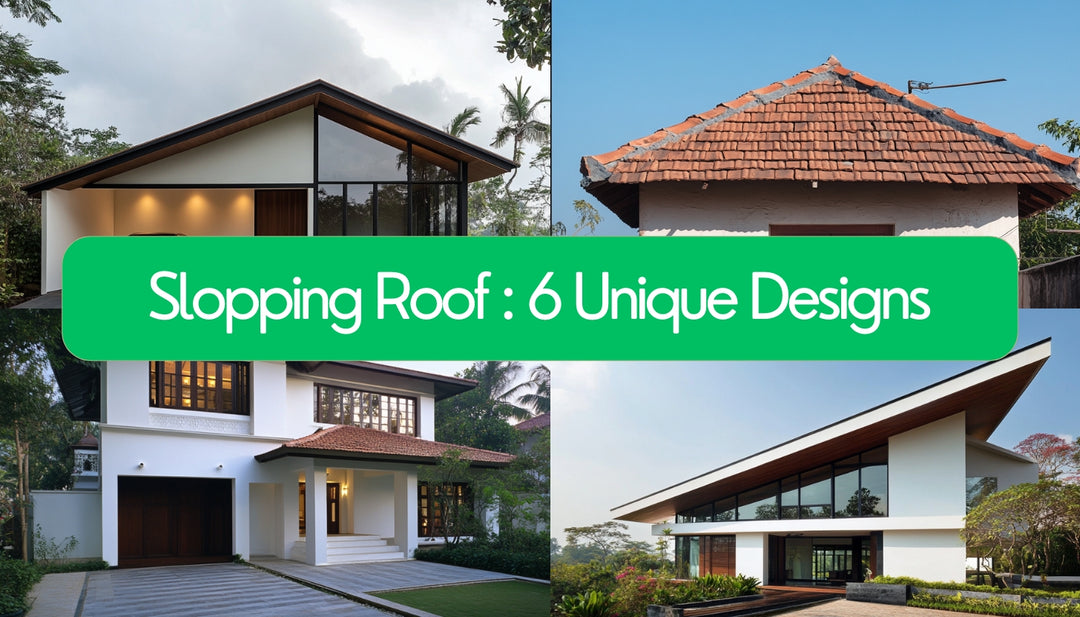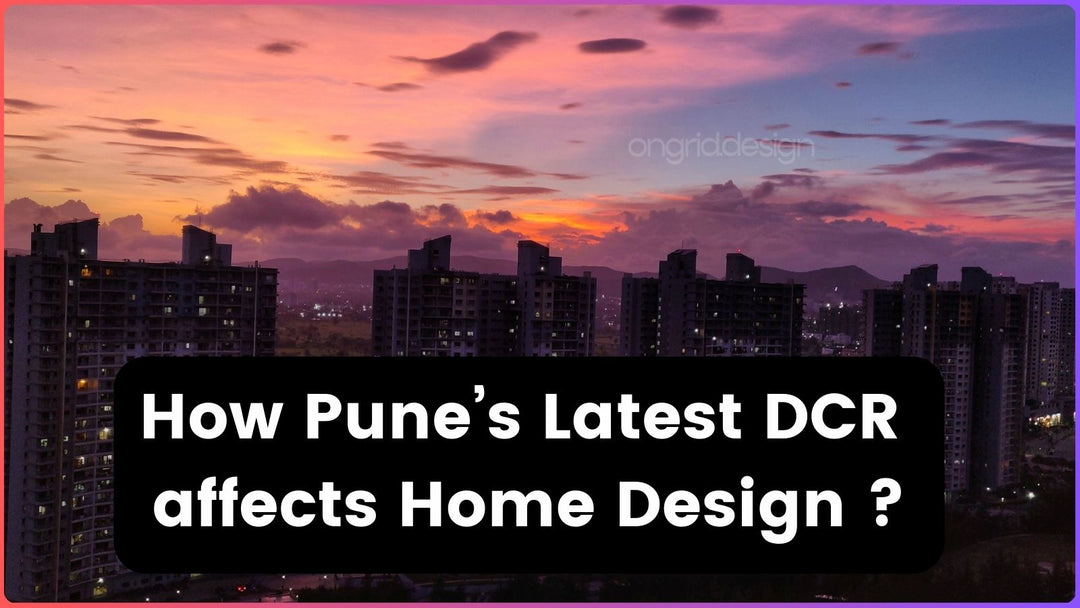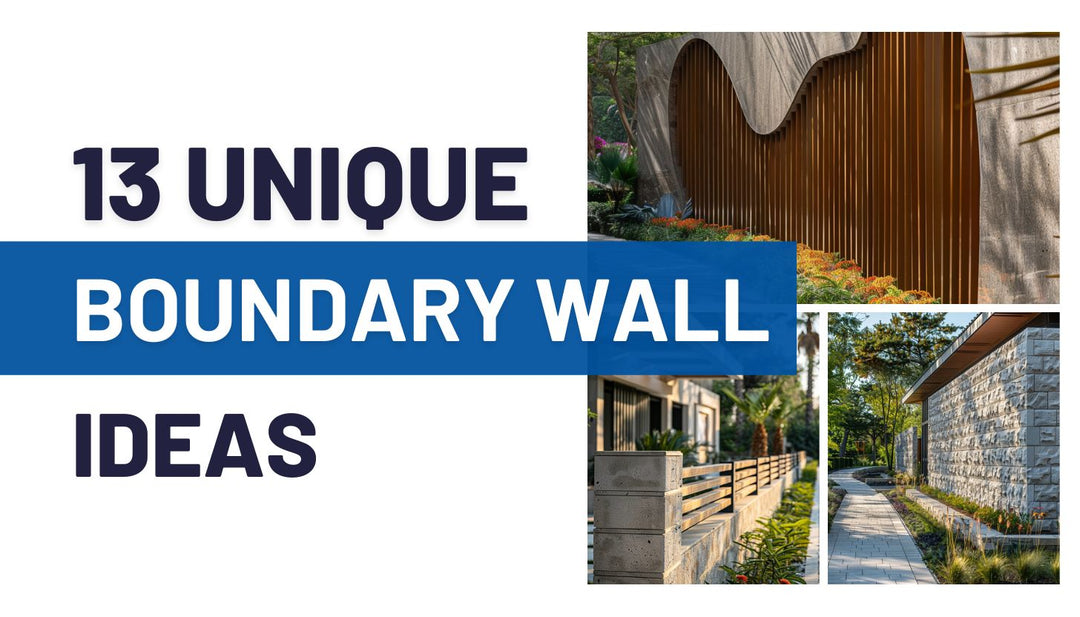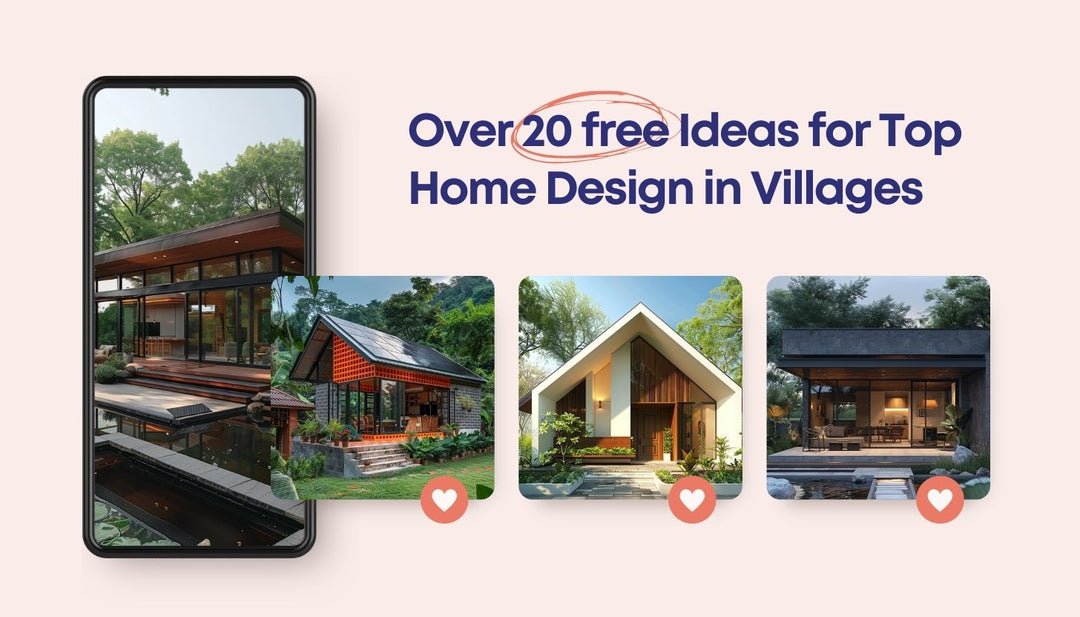ढलान वाली छत प्रणाली: प्रकार, लाभ और विचार के लिए मार्गदर्शिका

सही छत प्रणाली का चयन करना एक महत्वपूर्ण निर्णय है जो सौंदर्यशास्त्र, कार्यक्षमता, स्थायित्व और ऊर्जा दक्षता को प्रभावित करता है। ढलान वाली छत प्रणाली अपनी कुशल जल और बर्फ-बहाव क्षमताओं के कारण लोकप्रिय हैं। यह व्यापक मार्गदर्शिका विभिन्न प्रकार की ढलान वाली छत प्रणालियों, उनके फायदे और नुकसान, चयन कारकों और लागत, रखरखाव और स्थिरता के लिए विचारों की पड़ताल करती है।
ढलान वाली छत प्रणाली को समझना
ढलान वाली छत प्रणाली में एक या एक से अधिक झुकी हुई सतहें होती हैं जो पानी, बर्फ और मलबे को नीचे की ओर निर्देशित करने के लिए डिज़ाइन की जाती हैं। छत की ढलान या "पिच" जलवायु और वास्तुशिल्प आवश्यकताओं के आधार पर भिन्न होती है । ढलान वाली छतें न केवल कार्यात्मक उद्देश्यों की पूर्ति करती हैं बल्कि इमारत के वास्तुशिल्प चरित्र को भी परिभाषित करती हैं।
ढलान वाली छत प्रणालियों के प्रकार
1. गेबल छत

त्रिकोणीय आकार की विशेषता वाली गैबल छत सबसे आम ढलान वाली छत प्रणालियों में से एक है।
लाभ:
- सरल डिजाइन, निर्माण में आसान
- उत्कृष्ट जल प्रबंधन एवं संरक्षण
- पर्याप्त अटारी स्थान या गुंबददार छत प्रदान करता है
नुकसान:
- हवा से होने वाली क्षति के प्रति संवेदनशील
- स्थायित्व के लिए अतिरिक्त फ़्रेमिंग की आवश्यकता होती है
डिज़ाइन संबंधी विचार:
- आदर्श पिच: 4:12 से 9:12
- तेज़ हवा वाले क्षेत्रों को छोड़कर अधिकांश जलवायु के लिए उपयुक्त
2. हिप छत

हिप छत में चारों तरफ ढलान होती है, जो ऊपर जाकर एक रिज का निर्माण करती है।
लाभ:
- गैबल छतों की तुलना में अधिक पवन प्रतिरोधी
- अतिरिक्त रहने या अटारी स्थान प्रदान करता है
- बेहतर छाया कवरेज प्रदान करता है
नुकसान:
- निर्माण में अधिक खर्च
- अधिक सामग्री और श्रम की आवश्यकता होती है
डिज़ाइन संबंधी विचार:
- आदर्श पिच: 4:12 से 6:12
- तेज़ हवा वाले क्षेत्रों के लिए उत्कृष्ट
3. मैनसर्ड छत

फ्रांसीसी वास्तुकला से प्रेरित मैनसर्ड छत में चार भुजाएं हैं तथा प्रत्येक ओर दो ढलान हैं।
लाभ:
- अतिरिक्त रहने की जगह प्रदान करता है (पूर्ण अटारी या मचान)
- पारंपरिक घरों के लिए सौंदर्य अपील
- नवीन ग्लास स्थापनाओं के साथ अनुकूलन योग्य
नुकसान:
- निर्माण जटिल एवं महंगा
- नियमित रखरखाव की आवश्यकता है
डिज़ाइन संबंधी विचार:
- निचली ढलान पिच: 60-80 डिग्री
- ऊपरी ढलान पिच: 10-30 डिग्री
- ऊंचाई प्रतिबंध वाले शहरी क्षेत्रों के लिए सर्वोत्तम
4. गैम्बरेल छत

आधुनिक फार्महाउस डिजाइनों में अक्सर देखी जाने वाली गैम्ब्रेल छत में प्रत्येक तरफ दो ढलान होते हैं।
लाभ:
- तीव्र ढलान के कारण अधिक रहने की जगह
- कुशल जल एवं बर्फ निकासी
- अद्वितीय और आकर्षक सौंदर्य
नुकसान:
- नियमित रखरखाव की आवश्यकता है
- तेज़ हवा या तूफ़ान वाले क्षेत्रों के लिए उपयुक्त नहीं
डिज़ाइन संबंधी विचार:
- निचली ढलान पिच: 60-80 डिग्री
- ऊपरी ढलान पिच: 15-30 डिग्री
- मध्यम जलवायु वाले क्षेत्रों के लिए उपयुक्त
5. स्किलियन रूफ

स्किलियन छत या शेड छत एकल, ढलान वाली सतह से बनी होती है।
लाभ:
- सरल, लागत प्रभावी निर्माण
- आधुनिक स्थापत्य शैली के लिए बढ़िया
- सौर पैनल स्थापना के लिए आदर्श
नुकसान:
- सीमित अटारी या भंडारण स्थान
- तेज़ हवा या अत्यधिक बर्फबारी वाले क्षेत्रों के लिए उपयुक्त नहीं
डिज़ाइन संबंधी विचार:
- आदर्श पिच: 1:12 से 3:12
- समकालीन डिजाइन और ऐड-ऑन के लिए सर्वश्रेष्ठ
6. साल्टबॉक्स छत

साल्टबॉक्स छत में असममित डिजाइन होता है, जिसमें एक ओर दूसरी ओर से अधिक लम्बी होती है।
लाभ:
- अद्वितीय और ऐतिहासिक सौंदर्यबोध
- कठोर मौसम की स्थिति के प्रति टिकाऊ
- रहने की जगह को अधिकतम करता है
नुकसान:
- असममित डिजाइन निर्माण को जटिल बनाता है
- अतिरिक्त सामग्री और श्रम की आवश्यकता हो सकती है
डिज़ाइन संबंधी विचार:
- सामने की ढलान पिच: 6:12 से 8:12
- पीछे की ढलान पिच: 4:12 से 5:12
- औपनिवेशिक शैली के घरों के लिए उपयुक्त
ढलान वाली छत प्रणालियों का तुलनात्मक विश्लेषण

|
छत का प्रकार |
लागत |
सहनशीलता |
पवन प्रतिरोध |
बर्फ भार क्षमता |
अटारी स्थान |
|
मकान का कोना |
कम |
अच्छा |
गोरा |
अच्छा |
उत्कृष्ट |
|
कूल्हा |
उच्च |
उत्कृष्ट |
उत्कृष्ट |
बहुत अच्छा |
अच्छा |
|
मैनसर्ड |
उच्च |
अच्छा |
अच्छा |
अच्छा |
उत्कृष्ट |
|
गैम्बरेल |
मध्यम |
अच्छा |
गोरा |
बहुत अच्छा |
उत्कृष्ट |
|
स्किलियन |
कम |
अच्छा |
गोरा |
गोरा |
गरीब |
|
साल्टबॉक्स |
मध्यम |
बहुत अच्छा |
अच्छा |
अच्छा |
अच्छा |
ढलान वाली छत प्रणाली चुनते समय विचार करने योग्य कारक

- जलवायु अनुकूलन और निष्क्रिय डिजाइन : वर्षा, बर्फबारी और हवा की तीव्रता सहित स्थानीय मौसम पैटर्न पर विचार करें।
- वास्तुकला शैली: सुनिश्चित करें कि छत आपके घर के समग्र डिजाइन के अनुरूप हो।
- बजट: प्रारंभिक लागत और दीर्घकालिक रखरखाव व्यय को ध्यान में रखें।
- एकीकृत टिकाऊ डिजाइन : इन्सुलेशन और सौर पैनल स्थापना के लिए छत की क्षमता पर विचार करें।
- स्थानीय भवन संहिता: छत की ढलान, सामग्री और संरचनात्मक अखंडता से संबंधित विनियमों का पालन करें।
ढलान वाली छत प्रणालियों के लिए रखरखाव युक्तियाँ

- द्विवार्षिक निरीक्षण करें, विशेषकर खराब मौसम की घटनाओं के बाद।
- पानी से होने वाली क्षति को रोकने के लिए नालियों और नालियों को नियमित रूप से साफ करें।
- मलबे के संचय को कम करने के लिए पेड़ की लटकती शाखाओं को काटें।
- क्षतिग्रस्त या गायब शिंगल्स की तुरंत जांच करें और उन्हें बदल दें।
- बर्फ के बांधों को रोकने और छत के जीवन को बढ़ाने के लिए उचित अटारी वेंटिलेशन सुनिश्चित करें।
नवीन छत सामग्री और प्रौद्योगिकियां

- शहरी ताप शमन समाधान : अधिक सूर्यप्रकाश को परावर्तित करें और कम ताप अवशोषित करें, जिससे ऊर्जा लागत कम हो।
- हरित छतें: बेहतर इन्सुलेशन और पर्यावरणीय लाभ के लिए वनस्पति को शामिल करें।
- सौर टाइलें: सौर प्रौद्योगिकी को सीधे छत सामग्री में एकीकृत करें।
- सिंथेटिक स्लेट: बेहतर स्थायित्व और कम वजन के साथ प्राकृतिक स्लेट का लुक प्रदान करता है।
- धातु छत: दीर्घायु, ऊर्जा दक्षता और पुनर्चक्रण क्षमता प्रदान करती है।
पूछे जाने वाले प्रश्न
प्रश्न: सबसे टिकाऊ ढलान वाली छत प्रणाली कौन सी है?
उत्तर: हिप छतों को आमतौर पर उनके उत्कृष्ट वायु प्रतिरोध और संरचनात्मक स्थिरता के कारण सबसे टिकाऊ माना जाता है।
प्रश्न: सौर पैनल स्थापना के लिए कौन सी छत प्रणाली सर्वोत्तम है?
उत्तर: स्किलियन छतें अपनी एकल, कोणीय सतह के कारण सौर पैनलों के लिए आदर्श हैं। हालाँकि, गैबल और हिप छतें भी सौर प्रतिष्ठानों को प्रभावी ढंग से समायोजित कर सकती हैं।
प्रश्न: मुझे अपनी ढलान वाली छत का कितनी बार निरीक्षण करना चाहिए?
उत्तर: यह अनुशंसा की जाती है कि आप अपनी छत का निरीक्षण वर्ष में कम से कम दो बार करें, आमतौर पर वसंत और पतझड़ में, तथा किसी भी गंभीर मौसम की घटना के बाद।
प्रश्न: ढलान वाली छत प्रणाली का औसत जीवनकाल कितना है?
उत्तर: जीवनकाल सामग्री और रखरखाव के आधार पर भिन्न होता है। डामर शिंगल आम तौर पर 20-30 साल तक चलते हैं, जबकि धातु की छतें उचित देखभाल के साथ 50+ साल तक चल सकती हैं।
प्रश्न: क्या मैं नवीनीकरण के दौरान उपयोग की जाने वाली छत का प्रकार बदल सकता हूँ?
उत्तर: हां, बड़े नवीनीकरण के दौरान अपनी छत का प्रकार बदलना संभव है, लेकिन इसके लिए सावधानीपूर्वक संरचनात्मक योजना की आवश्यकता होती है और यह महंगा भी हो सकता है।
निष्कर्ष
सही ढलान वाली छत प्रणाली का चयन करने में सौंदर्यशास्त्र, कार्यक्षमता, जलवायु संबंधी विचार और बजट का संतुलन शामिल है। प्रत्येक प्रकार अद्वितीय लाभ और चुनौतियाँ प्रदान करता है, जिससे आपकी विशिष्ट आवश्यकताओं का आकलन करना और छत बनाने वाले पेशेवरों से परामर्श करना महत्वपूर्ण हो जाता है।
ऑनग्रिड डिज़ाइन में, हम ऐसे आर्किटेक्चरल समाधान बनाने में माहिर हैं जो न केवल दिखने में आकर्षक हों बल्कि कार्यात्मक और टिकाऊ भी हों। हमारी विशेषज्ञ आर्किटेक्चरल सेवाएँ आपको अपने घर के लिए सही ढलान वाली छत प्रणाली चुनने की प्रक्रिया में मार्गदर्शन कर सकती हैं, यह सुनिश्चित करते हुए कि यह लंबे समय तक चलने वाली स्थायित्व और दक्षता प्रदान करते हुए आपकी डिज़ाइन दृष्टि को पूरा करती है।
क्या आप कस्टम रूफिंग समाधान के साथ अपने घर के डिज़ाइन को बेहतर बनाने के लिए तैयार हैं? अपने रूफिंग प्रोजेक्ट पर काम शुरू करने के लिए आज ही ऑनग्रिड डिज़ाइन से संपर्क करें!











एक टिप्पणी छोड़ें